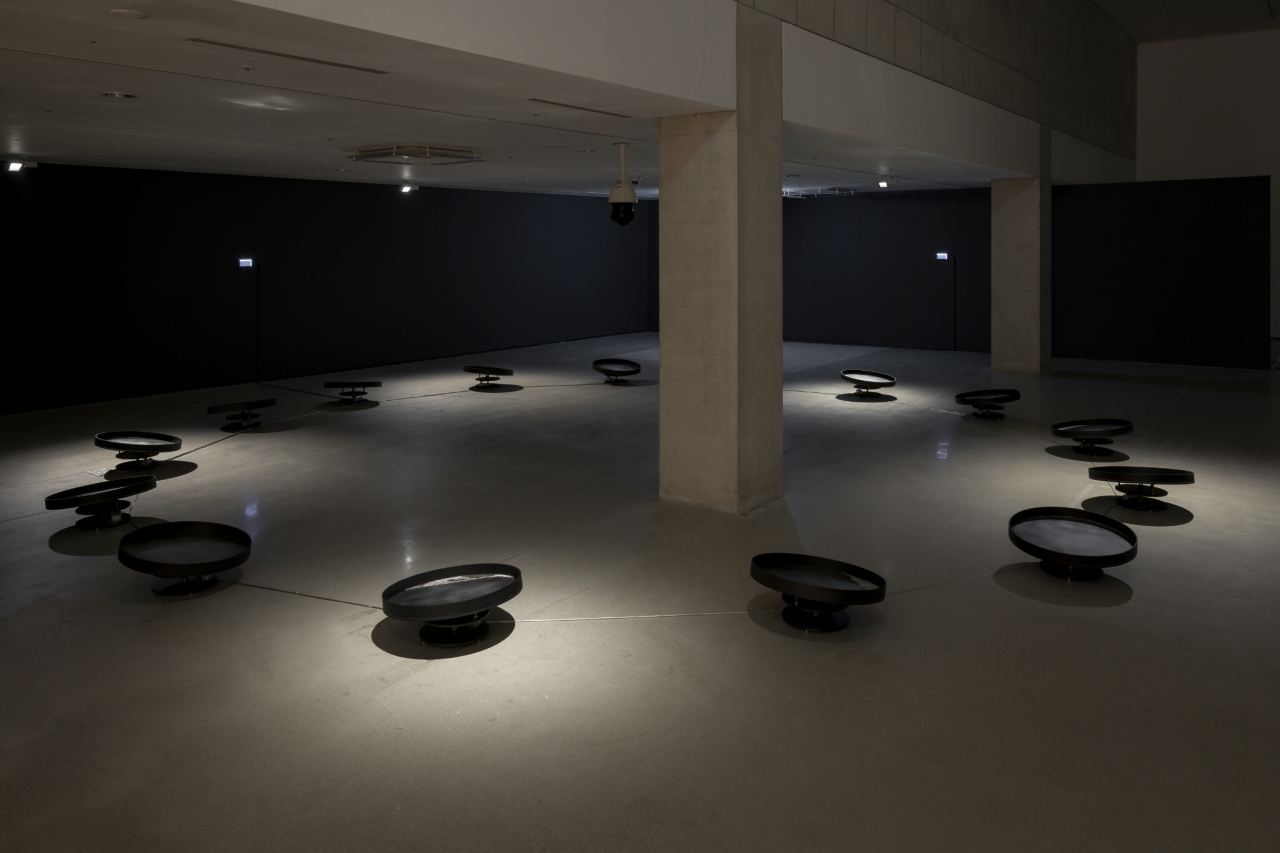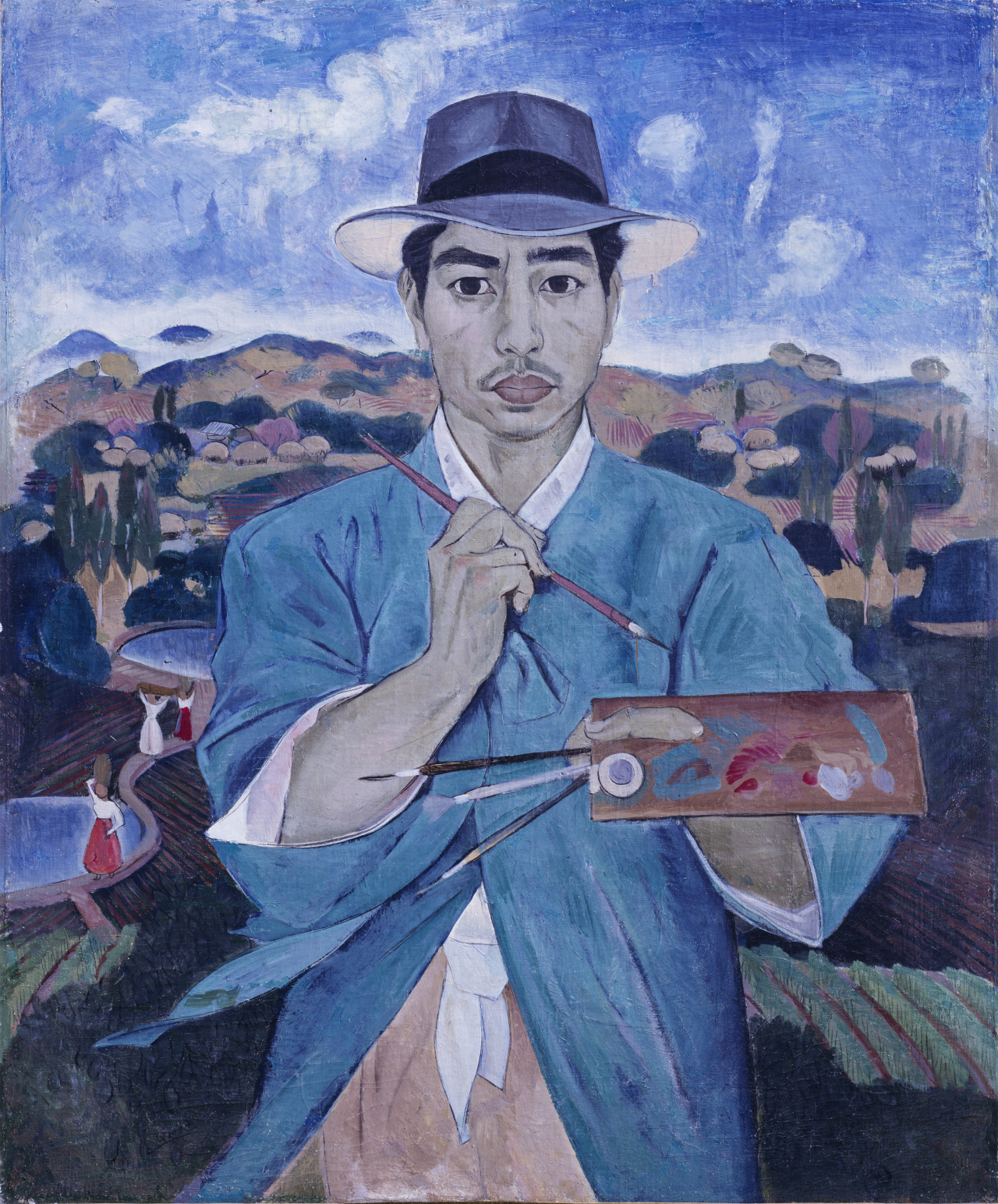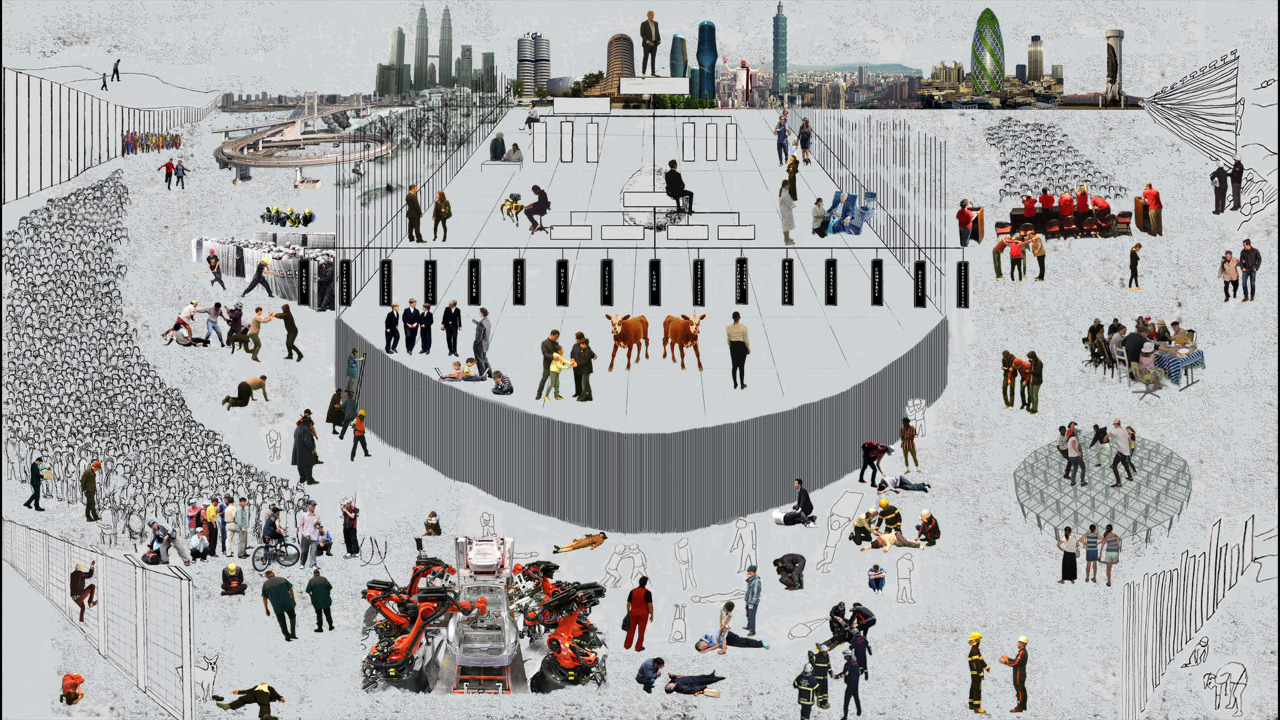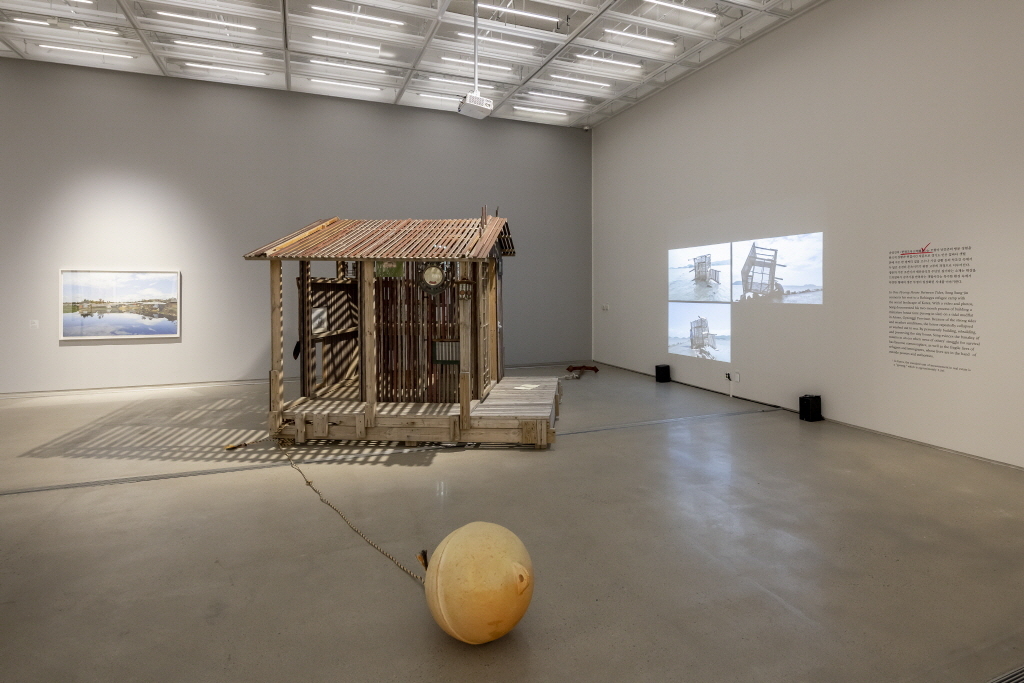The National Museum of Modern and Contemporary Art in Korea is holding the exhibition “The Square: Art and Society in Korea 1900-2019” in celebration of its 50th anniversary this year.
 |
Shin Seung-back and Kim Yong-hun’s installation “Mind” at the MMCA’s main branch in Samcheong-dong (MMCA) |
The exhibition takes place in the three MMCA venues, including the main branch and the Deoksugung branch in central Seoul, Gwacheon branch in Gyeonggi Province. It’s the first time for the museum to hold an exhibition at three different venues.
The binding motif for the exhibitions at three separate venues is famous Korean novel “The Square” by Choi In-hun, which summarizes Korea’s modern history, including the ideological and social tensions in the mid-20th century.
The exhibition introduces about 450 artworks by 290 artists from here and abroad, ranging from early 20th century traditional painters to local contemporary artists who utilizes high-end technology in their works.
There’s a lot to get through here, as it also comprises archive materials. The museum, however, felt its inclusion was an inevitable decision as it wanted to offer enough materials that reflect diverse narratives that back up the larger history.
“Take the Vietnam War section, for instance. We could have just hung one large painting -- perhaps the most well-known one -- and said that it sums it all up. But then, we would be overlooking other minor narratives,” explained curator Kang Soo-jung, who was responsible for the exhibition at Gwacheon.
“We hope visitors come and see a variety of artworks and historical materials and associate themselves with them to build their own narratives,” Kang added.
The artworks shown at the MMCA’s three venues are different from one another as they cover various historical events and periods. The MMCA’s Deoksugung deals with history and artworks from 1900 to 1950 and the Gwacheon branch covers the period from 1950-2019. The main branch in Samcheong-dong area specifically focuses on 2019.
Deoksugung
On view at the Deoksugung branch are artworks ranging from early 20th century traditional painters like Yang Gi-hun, Kim Kyu-jin and Chae Yong-shin to Korea’s modern masters such as Kim Whan-ki, Lee Joong-seop, Byun Wol-ryong, Oh Se-chang, Ko Hui-dong and Suh Se-ok, spanning over four different sections.
 |
Chae Yong-shin’s 1920 painting “Portrait of Jeon Woo,” at the MMCA Deoksugung branch (MMCA) |
Each section comes together with historical materials, such as publications, posters, films and others, which represent social, political and cultural changes of the different times.
The exhibition at the Deoksugung branch also features an installation work in a dark room, which presents multiple faces of traditional wooden figurines used at funerals to commemorate citizens who were maltreated by Japan’s colonial rule the after nationwide March 1 Independence Movement.
 |
Lee Que-de’s “Self-portrait in Blue" at the MMCA Deoksugung branch (MMCA) |
A must-see painting includes Lee Que-de’s “Self-portrait in Blue.” This picture, from a private collection, has been lent to only the MMCA, according to the museum.
Shown in the entrance hall of Deoksugung is painter Lee Ung-no’s 1982 work from his famous series “People.” Lee’s work is one of artworks that bridges the Deoksugung exhibition to the one in Gwacheon branch, according to curator Kim In-hye.
Gwacheon
The exhibition at the Gwacheon branch starts with a section that looks into the years before and after the Korean War. Byun Wol-ryong’s 1954 work “Repatriation of North Korean Prisoners of War at Panmunjom” is one of the works that reflect the years. Works by Lee Joong-seop and Park Soo-keun are also displayed in the section.
Succeeding sections all have certain themes and artworks that reflect the historical events.
One of the seven sections highlights the 1970s and the government-led industrial development. Works shown in this part of exhibition include the ones by Park Seo-bo, Yun Hyong-keun, Quac In-sik, Lee U-fan and other artists, who have earned international fame.
In one corner, visitors can also see Chang Uc-chin’s 1974 painting of pottery together with actual pottery installations around it. The approach reminds viewers of the time when large pottery storage jars that Koreans kept in their yards started to disappear when large high-rise apartment complexes with refrigerators began sprouting up in the cities.
 |
Lee Ung-no’s 1986 painting from his “People” series, at the MMCA Gwacheon branch (MMCA) |
Also on view in this 1970s section is a room that specifically deals with the East Berlin Spy Incident. One of Lee Ung-no’s “People” series of paintings is shown on one side of the room, and a handwritten score that composer Yun I-sang created in 1968 for his “Images” is shown on the other side. The two are well-known artists who had to flee to Europe due to the oppression of military regime.
The following section introduce works related with the democratization movement in Korea, including the one took place on May 18 in Gwangju. A shoe of Lee Han-yeol -- Yonsei student died in protest -- is located in a large hallway.
Other sections include artworks that came after the downfall of the military regime, as well as the years after the millennium. Suh Do-ho, Lee Bul, Yang Hae-gue and Song Sang-hee’s works are shown there.
The last part of the Gwacheon exhibition is at the circular hall. Jang Minseung’s “Voiceless-pitch-dark, a withered field” is a work made in commemoration of victims of the 2014 Sewol ferry disaster, and Christian Boltanski’s installation “Monument-Comfort Women” is a work dedicated to the women who were forced to work as sex slaves during Japan’s colonial rule.
Samcheong
The 50th anniversary exhibition at the MMCA main branch features more recent works of Korean contemporary artists.
Artists Shin Seung-back and Kim Yong-hun’s “Mind” is a large installation that uses artificial intelligence and facial recognition technology to assess visitors’ emotions. Based on the emotions that the AI detects, the installation makes wave sounds accordingly.
 |
Ham Yang-ah’s video work “Undefined Panorama 1.0” at the MMCA’s main branch in Samcheong-dong (MMCA) |
 |
Song Sung-jin’s “One Pyeong House Between Tides,” shown at the MMCA’s main branch in Samcheong-dong area (MMCA) |
Ham Yang-ah’s “Undefined Panorama 1.0” is a visual summary of contemporary societies. The video consisting of cut-and-paste human figures, photos and drawings show social structure, class struggles, technological changes, refugee issues as well as other historical moments like Occupy Wall Street.
Song Sung-jin’s “One Pyeong house Between Tides” is the artist’s project in 2018. Song built a one-pyeong -- 3.3-square-meter -- house in the middle of a mud flat in the western shore and lived there for about two months, in an attempt to understand the lives of the people he met at a Rohingya refugee camp.
“I chose the mud flat as my project location because it is similar to the delta area where Rohingya refugees live -- a tree-less place where you have to constantly relocate and fix your housing whenever there is a flood. I also wanted to work by the shore because it is usually the first location a refugee exits and the last place a refugee arrives,” Song said.
Other participating artists include Eric Baudelaire, Yokomizo Shizuka, Hong Seung-hye, Hong Jin-hwon, Nalini Malani, Chung Seo-young, Kim Hee-cheon, Joo Hwang, Oh Hein-kuhn.
By Shim Woo-hyun (
ws@heraldcorp.com)













![[Today’s K-pop] Blackpink’s Jennie, Lisa invited to Coachella as solo acts](http://res.heraldm.com/phpwas/restmb_idxmake.php?idx=644&simg=/content/image/2024/11/21/20241121050099_0.jpg)